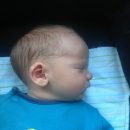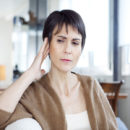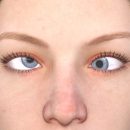Colic Disease

Colic is by far one of the most common and distressing problems for a new mother to have to manage. A baby with colic, which is another term for abdominal pain, can last for many hours per day or night and can be very difficult to settle, feed resulting in an exhausted baby and an exhausted mother.
The 5 main reasons for colic include:
- Irritable gut – where the milk often passes through to the small intestine too quickly prior to being broken down in the stomach. This will give the baby a distended windy abdomen. The baby may look like it is pushing all the time when it is awake, to try and get rid of the wind. Symptoms usually occur 30-90 minutes after a feed.
- Poor feeding/latching – this may occur with a baby who has a tongue tie or a latching problem where the baby is bringing in a lot of wind whilst it is suckling at the breast or the bottle. The baby will often make a clicking sound with its tongue on suckling or it may have a recessive jaw where the jaw is not opening well to latch onto the nipple.
- Reflux – where the contents of the stomach comes back up the oesophagus (tube from mouth to stomach) and causes burning in the oesophagus. Symptoms usually occur immediately after the feeding starts or up to 20 minutes after the baby feeds. He or she may reject the breast or bottle.
- Lactose intolerance – This is where the baby cannot tolerate the lactose in the milk. Symptoms usually occur 2 hours after the feed when the milk starts to ferment in the large bowel.
- Constipation – At 6 weeks the peak time for colic a baby may become constipated. The bowel slows down from opening from 6-8 times per day to 1-2 per day. Some babies may get constipated and the bowels do not open for 4-5 days. Although, medically this is not a problem babies do tend to suffer from a lot of discomfort.
Osteopathic diagnosis and treatment will often involve treatment to:
- The gut. To palpate and use techniques to expel the wind or help empty the bowels In Kane and Ross this is a technique that we will teach the mother of the baby so they can help their baby on a daily basis to prevent the build up of wind.
- The diaphragm and rib cage. This can often get distorted during delivery, causing a torsion in the diaphragm resulting in the valve at the entrance to the stomach not closing properly so that acid comes up into the oesophagus. Osteopathic techniques can balance the rib cage and release torsions through the diaphragm.
- The head, neck and mouth. There is a branch of the vagus nerve which supplies the gut and the nerves to the diaphragm are supplied by the neck. Osteopathy will gently release restrictions in the neck and around the tongue allowing the baby to suckle more easily bringing in less wind.
- The baby generally. Sometimes after birth, a stressful pregnancy, or if a baby has been in a lot of pain, they may be generally tense. Osteopaths can usually feel this on palpation, and use specific techniques to calm and relax the baby.
Osteopathic treatment is gentle and babies will often be relaxed after treatment and sleep. Feeding may become easier if there is a latching problem and mothers will be taught some specific techniques for feeding or winding their baby.
Most babies can be treated well with osteopathic treatment or a combination of medication and osteopathy. If we feel like a baby needs medication we will discuss this with you and if necessary with your baby’s GP or paediatrician.
When to take the baby to the osteopath?
Ideally, babies are seen as soon as possible after birth within the first 2 weeks. This allows us to diagnose any strains or stresses in the body early and treat them; if the baby is older it will often need more treatment. If you recognise that the baby has had a difficult birth, a forceps delivery, ventouse or an emergency c-section after an attempted vaginal delivery, it is advisable for the baby to be seen as early as possible.
WHAT IS COLIC ?
Abdominal discomfort, excessive crying for many hours per day or night and difficulty in settling can be very stressful situations for both babies and their parents, who often find managing colic overwhelming, as it affects your babies sleep and feeds.
However, be reassured that your baby is still in good health.
Colic is not a disease in itself and it is usually resolved by within 8-12 weeks, or during the first year of life.
Osteopathy, often combined with medication, can help relieve symptoms of colic.
SIGNS THAT INDICATE MY BABY MIGHT SUFFER FROM INFANT COLIC
- Symptoms usually start week 2 or earlier.
- Inconsolable crying or fussing that lasts a few hours, usually worse in the late afternoon or early evening.
- Signs of discomfort such as red face, arching back and clenched fists.
- Unsettled, jumpy, poor sleep.
- Crying for no apparent reason, baby is not hungry, doesn’t have a wet nappy, is not cold/hot..
- Excessive and explosive flatulence, excessive bowel sounds, hard and distended abdomen, frequent watery/mucousy stools.
HOW CAN CRANIAL OSTEOPATHY HELP?
Osteopathy doesn’t substitute to medical treatment. However, it can have an important role in optimising gut function by identifying and minimising the underlying causes of your baby’s symptoms.
Your osteopath will also rule out other factors that might contribute to it (such as allergies…) and refer you for further medical examinations when needed.
The main areas your osteopath will work on are:
- The digestive system: Gentle techniques to expel wind and help empty your babies bowels.
- The thorax and diaphragm: This can often get distorted during delivery, causing a torsion in the diaphragm.
- Prolonged and excessive crying:Due to abdominal discomfort in a colicky baby, it can cause additional tension in the thoracic region, increasing the sensation of discomfort for baby. Osteopathic techniques can balance the rib cage and release torsions through the diaphragm.
- The neck, head and mouth:By gently releasing tension in the neck and around the mouth, osteopathy contributes to better sucking, bringing in less wind.
- The vagus nerve:Which exits from the base of the skull and supplies the stomach and the upper part of the intestines, can become irritated or compressed during the birth process. Irritation of this nerve is thought to contribute to the colicky symptoms.
- Visceral tensions caused by colic: Can provoke tension in the spine, which can affect the mobility of the back and neck, which in turn can interfere with proper food absorption as well as making breastfeeding more challenging.














